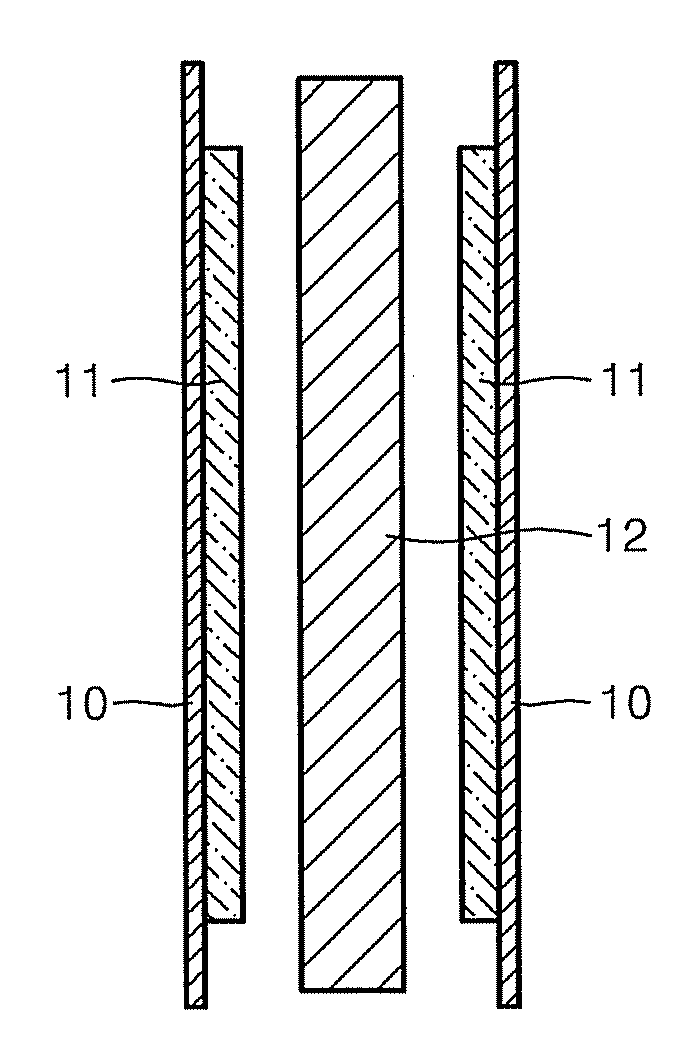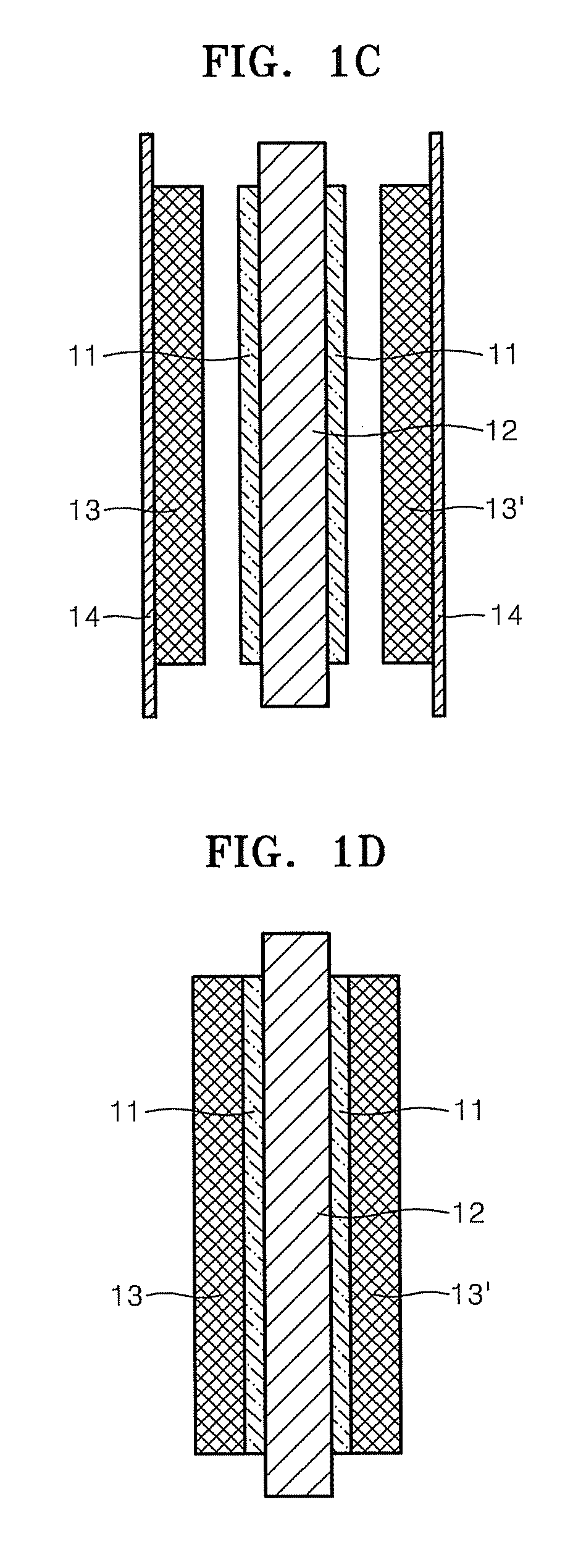Membrane electrode assembly for fuel cell, and method of manufacturing the same
- Summary
- Abstract
- Description
- Claims
- Application Information
AI Technical Summary
Benefits of technology
Problems solved by technology
Method used
Image
Examples
synthesis example 1
Preparation of Clay-Polysulfone of Formula 2 Nanocomposite
[0064]
[0065]In Reaction Formula 1, m is 0.4, n is 0.6, and k is 120.
[0066]A mixture of sulfated-4,4′ dichlorodiphenyl sulfone (S-DCDPS, 0.1 mol), 4,4′dichlorodiphenyl sulfone (DCDPS, 0.35 mol), 4,4′-(hexafluoroisopropylidene)diphenol (HFIPDP, 0.459 mol), montmorillonitrile (3 parts by weight based on 100 parts by weight of monomer) as a nonmodified clay, and potassium carbonate (0.55 mol), were refluxed for 12 hours, at 160° C., using NMP (120 mL) and toluene (100 mL) as solvents, to remove water. After confirming that water was no longer coming out through a Dean Stock, toluene was removed through a valve. Sequentially, the reaction mixture was heated to 180° C., over 2 hours, and polymerization was carried out for 4 hours.
[0067]As polymerization progressed, the viscosity of the solution increased. Once the polymerization was complete, the polymerized product was cooled to room temperature; 000 mL of triple-distilled water w...
example 1
[0068]A binder layer-forming composition was obtained by mixing 50 g of the sulfonated polysulfone-clay nanocomposite obtained according to Synthesis Example 1 (mean molecular weight: 90,000), 2.5 g of polybenzimidazole, which is a basic polymer, 15 g of polyethylene glycol (mean molecular weight: 3000), which is a tackifier, 5 g of N,N′-dimethylacetamide (DMAc), and 50 g of N-methyl-2-pyrrolidinone (NMP) which are solvents.
[0069]The binder layer-forming composition was coated on a PET membrane, which is a support membrane, and dried at a temperature of 100° C., using a hot-air drier for 30 minutes, to form a binder layer, thereby obtaining a binder layer-forming transfer film. The binder layer of the transfer film (thickness: 10 μm) was disposed adjacent to the sulfonated polysulfone-clay nanocomposite electrolyte membrane (mean molecular weight: 90,000, sulfonation degree: 60%), and the layers were adhered at room temperature (20˜25° C.) under 0.1 ton / cm2, for 20 minutes. Then the...
example 2
[0077]A binder layer-forming composition was obtained by mixing 50 g of the sulfonated polysulfone-clay nanocomposite obtained according to Synthesis Example 1 (mean molecular weight: 90,000), 15 g of polyethylene glycol (mean molecular weight: 3000) which is a tackifier, 3 g of DMAc, and 30 g of NMP. The binder layer-forming composition was coated on a PET membrane and dried at 100° C., using a hot-air drier for 30 minutes, to form a binder layer, thereby obtaining a binder layer-forming transfer film.
[0078]The binder layer of the transfer film (thickness: 10 μm) was disposed adjacent to the sulfonated polysulfone-clay nanocomposite electrolyte membrane (mean molecular weight: 90,000, sulfonation degree: 60%), and the layers were adhered at room temperature (20˜25° C.) under 0.1 ton / cm2 of pressure, for 20 minutes. Then the PET membrane was removed from the resultant structure by exfoliation.
[0079]The cathode catalytic layer-forming slurry obtained as described in Example 1 was pou...
PUM
 Login to View More
Login to View More Abstract
Description
Claims
Application Information
 Login to View More
Login to View More - R&D
- Intellectual Property
- Life Sciences
- Materials
- Tech Scout
- Unparalleled Data Quality
- Higher Quality Content
- 60% Fewer Hallucinations
Browse by: Latest US Patents, China's latest patents, Technical Efficacy Thesaurus, Application Domain, Technology Topic, Popular Technical Reports.
© 2025 PatSnap. All rights reserved.Legal|Privacy policy|Modern Slavery Act Transparency Statement|Sitemap|About US| Contact US: help@patsnap.com



